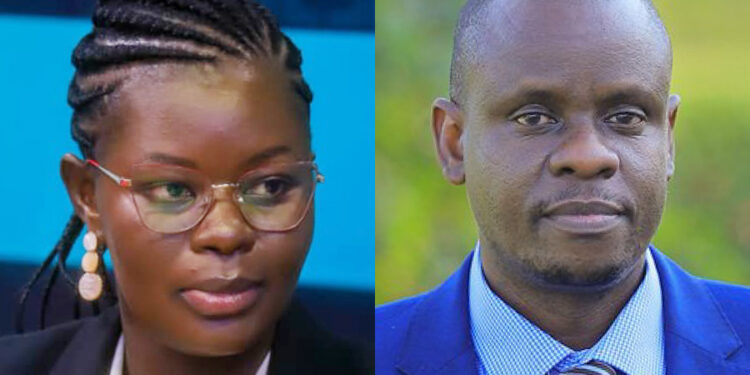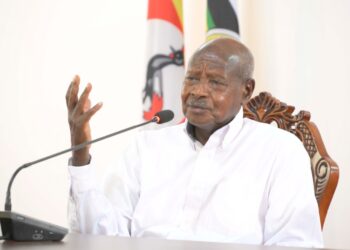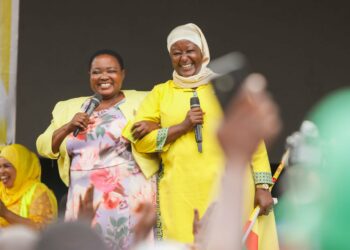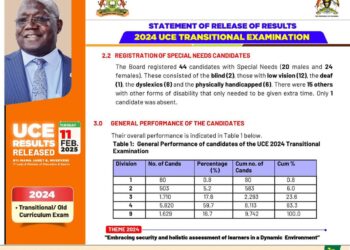President Yoweri Museveni on Thursday used Articles 108(2), 108A(1), 113(1), and 114(1) of the Republic of Uganda’s 1995 Constitution to reorganize his cabinet.
The reshuffle saw a replacement of some ministers and an entry of new faces like Balaam Barugahara and Lilian Aber.
Kitgum Woman legislator Lillian Aber will take on the responsibility of overseeing disaster preparedness, while Balaam Barugahara was appointed as the State Minister for Youth and Children. Both individuals are prominent members of the Patriotic League of Uganda, a pressure group led by Gen Muhoozi Kainerugaba, the first son. This group has often clashed with the ruling National Resistance Movement (NRM) party.
However these two appointments have sparked a debate across the country whether the Bush war general is on his move to weaken the baby Patriotic League of Uganda (PLU) or a strategy to foster transition of power to the First Son.
Different observers have come up with ddifferent narratives regarding the appointments.
A viewpoint posits that through designating persons closely linked to his son and the Patriotic League of Uganda members, Gen. Museveni seeks to create a network of allies that would bolster his son’s visibility and public influence throughout the nation. This tactic might be interpreted as a component of a longer-term scheme to guarantee his son’s political future both inside the National Resistance Movement (NRM)—the current ruling party—and in Ugandan politics at large.
However, other analysts put out an alternative theory. They contend that these appointments could be a calculated attempt by Gen. Museveni to slow the PLU’s explosive growth, an organization that has become a possible threat to the NRM’s hegemony. Gen. Museveni may have reduced the PLU’s capacity to function independently and possibly pose a challenge to his authority by appointing important PLU members to his cabinet, which would have neutralized the organization’s efficacy and co-opted its leadership into his government.
Regardless of the outcome, these selections are a reflection of Uganda’s complex political landscape and the continuous scheming inside the ruling party and its allies. These choices were probably made for a variety of reasons, including preserving stability within the NRM’s ranks, consolidating power, and planning for political succession.
Balaam holds an important role in the Patriotic League of Uganda (PLU), serving as its chief mobilizer. This makes his appointment as the State Minister for Youth and Children noteworthy. Gen. Muhoozi Kainerugaba’s PLU has drawn notice for its forceful approach and its popularity, especially among young people. Being the main organizer suggests that Balaam is essential in gaining support for the PLU’s goals and program.
Gen. Museveni may be deliberately utilizing his relationships and power by elevating Balaam to a ministerial role in order to bolster his administration’s outreach initiatives, particularly with regard to youth and children. Balaam’s wide network and prominence within the PLU may be a great help in furthering government programs, especially those that focus on youth involvement and empowerment.
Moreover, the appointment of Balaam highlights the intricate dynamics among political groups in Uganda, specifically within the governing National Resistance Movement (NRM) political party. It implies a deliberate attempt on the part of Gen. Museveni to absorb influential members of possible rival organizations, such as the PLU, into his government in order to minimize any perceived challenges to his power.
It also begs the question of how much Balaam’s loyalty to the PLU may affect his judgment as a government official, as well as any conflicts of interest. Rather than encouraging true young representation and empowerment, critics would see his selection as a way to entrench power and quell dissent.
Furthermore, there are many conjectures on how Balaam’s appointment might affect Gen. Muhoozi’s political future. Since Gen Muhoozi has become Chief of Defence Forces (CDF), Balaam’s joining the government may be seen as a component of a larger plan to bolster the power of the first family.
Critical questions remain in light of these developments: Does Balaam’s appointment represent a sincere commitment to inclusive government and political pluralism, or was it made with the intention of undermining PLU’s growing influence? Is it a long term plan to build a retaining and stable wall for Gen Muhoozi to lean against when his time has come?
The full implications of these events and the degree to which they influence Uganda’s changing political landscape will only become clear with time.
Do you have a story in your community or an opinion to share with us: Email us at editorial@watchdoguganda.com













